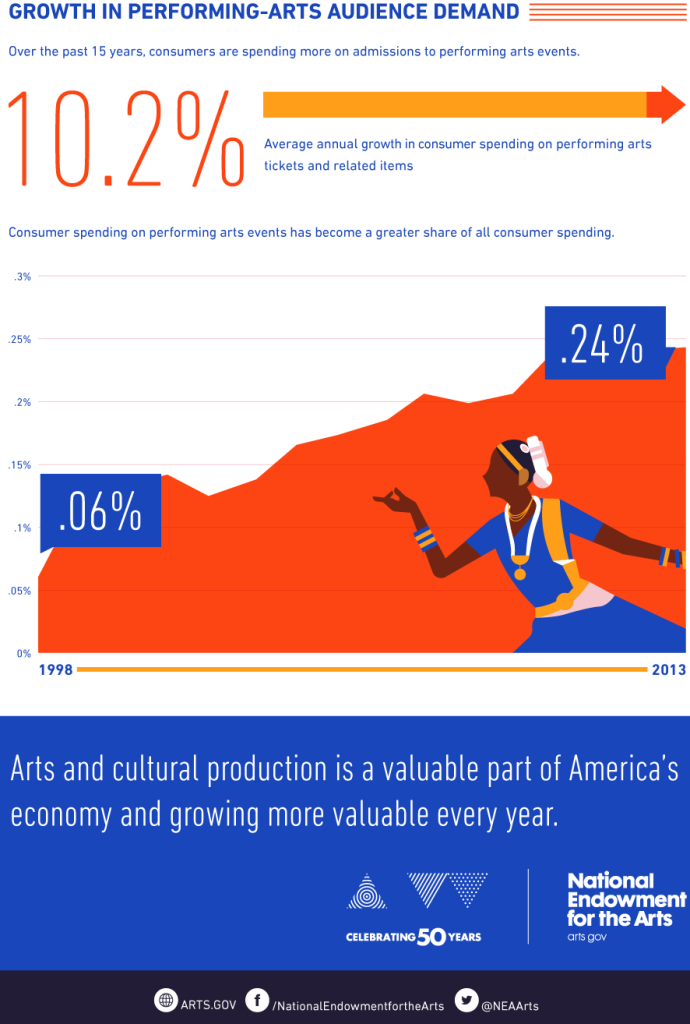Although this originated from a U.S. source, it is still relevant here in Canada.
March 9, 2016 Gene Carr, CEO Patronmail New York
“Many of you work tirelessly with donors and in your communities to dispel the notion that the audience for the arts is getting smaller. All too often that perception is out there, highlighted either without data or based on hearsay, or an article or blog post based largely on individual perception. Making this situation worse is that ours is unlike many other industries, in that there are few independent third-party sources that collect data and track the overall economic performance of our field.
That’s why I was pleased last month to come across the National Endowment for the Arts and the U.S. Bureau of Economic Analysis report with economic data covering the years 1998-2013. Though the data is three years old, it’s directionally very helpful.
The definitions in the report are broader than we typically would use to measure our own industry (this report includes data for music, theatre, opera, circus, ice-skating, and magic shows), but the one aspect of the report that is most germane is that consumer spending on the performing arts grew 10 percent annually over the 15-year period.
Below is an excerpt of an excellent infographic that you can find here:

In a related note, Robert Lynch, President and CEO of Americans for the Arts, writing in a Huffington Post article titled “Five Macro Trends That Arts Organizations Need to Watch,” lays out an agenda that his organization hopes the presidential campaigns will pay attention to during this election year.
He starts by highlighting something I’ve been saying for years—that arts and culture non-profits are different from all others, because their business models are hybrid. Although most non-profits (such as social service or NGOs) are purely mission-driven and thus their revenue comes entirely from contributions, the arts exist in both the non-profit world and the commercial world. These organizations are hybrids in my view. Lynch agrees:
Sixty percent of the revenue for nonprofit arts organizations comes from the sale of tickets, merchandise, and services. This means that they are operating more and more like small businesses.
Lynch goes on to point out perhaps the most important trend in managing an arts organization today, by referencing the dynamic change brought about by digital technology (emphasis is mine):
Digitally savvy arts marketers are increasing audience share. At our annual National Arts Marketing Project Conference, it seemed to be “all digital, all the time.” Social media platforms, and even email, have created a new world of connectivity, citizen critique, and marketing opportunity. Yet, while these platforms remain essential tools, nothing has replaced the value of building strong relationships with your own audiences and the power of word of mouth.
As you move your organization forward, I hope you’ll find these two third-party sources useful as you continue to forge ahead in running complex, hybrid organizations in a slowly growing (i.e., not shrinking) arts economy.”